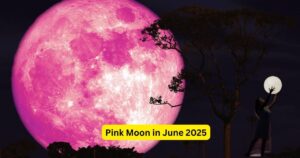Table of Contents
ToggleIntroduction: A New Era for AI Video Generation
Picture this: you type a simple description, and in seconds, you have a high-quality video complete with sound effects, background noises, and even character dialogue. Sounds like magic, right? That’s exactly what Google Veo 3 brings to the table. Unveiled at Google I/O 2025, this AI-powered video generation model is changing the game by combining stunning visuals with synchronized audio. It’s not just a tool—it’s a revolution in how we create videos.
Whether you’re a filmmaker dreaming up a short film, a marketer crafting a quick ad, or a teacher creating engaging lessons, Google Veo 3 makes it easier than ever. But with great power comes great responsibility. While it’s exciting, there’s also buzz about its impact on jobs in creative industries. In this post, we’ll dive into what makes Google Veo 3 special, how it compares to tools like OpenAI’s Sora, and what it means for the future of storytelling. Let’s get started!
What is Google Veo 3?
Google Veo 3 is the latest video generation model from Google DeepMind, building on the success of Veo and Veo 2. What sets it apart? It’s the first AI video tool to generate synchronized audio alongside high-quality visuals, ending the “silent era” of AI video generation, as Google DeepMind CEO Demis Hassabis puts it (TechRadar).
Here’s what makes it stand out:
Native Audio Generation: Creates sound effects, ambient noises, and dialogue that sync perfectly with the video.
High-Quality Visuals: Offers up to 4K resolution, realistic physics, and improved prompt adherence for accurate results.
Creative Control: Allows users to tweak camera angles, add or remove objects, and maintain character consistency.
Integration with Flow: Part of Google’s new AI filmmaking tool, Flow, which combines Veo, Imagen, and Gemini models for cinematic storytelling (Google Blog).
Imagine prompting Veo 3 with “A pirate ship sailing through a stormy sea, with waves crashing and sailors shouting.” You’d get a vivid video with roaring waves, creaking wood, and sailors’ voices—all generated in one go. That’s the power of Google Veo 3.
How Does Google Veo 3 Work?
So, how does this magic happen? Google Veo 3 uses advanced AI trained on vast datasets (likely including YouTube videos, though Google doesn’t confirm specifics) to understand visuals, motion, and sound. You provide a text or image prompt, and Veo 3 generates a video with matching audio. It’s like having a mini film studio at your fingertips.
For example:
Prompt: “A bustling city street with people walking and cars honking.”
Result: A video showing a lively street scene with the sounds of footsteps, chatter, and car horns, all perfectly synced.
The model excels at understanding real-world physics, like how water moves or how objects interact, making videos feel lifelike. It also supports creative controls, letting you adjust camera movements or edit scenes for a polished look.
Google Veo 3 vs. OpenAI Sora: A Head-to-Head Comparison
When it comes to AI video generation, Google Veo 3 and OpenAI’s Sora are the top contenders. But how do they stack up? Let’s break it down:
Audio Advantage: Veo 3’s ability to generate audio makes it a one-stop shop for video creation, unlike Sora, which requires separate audio tools.
Quality and Control: Veo 3’s 4K output and advanced controls give it an edge for professional-grade projects.
Accessibility: Sora may be more affordable for casual users, but Veo 3’s enterprise access via Vertex AI appeals to businesses.
Winner? It depends on your needs. For immersive, audio-visual content, Google Veo 3 leads the pack. For quick, budget-friendly videos, Sora might be enough.
Impact on Creative Industries
Google Veo 3 is making waves in creative industries, but it’s a double-edged sword. Here’s how it’s shaking things up:
Benefits for Creators
Faster Production: Create storyboards, ads, or short films in minutes, saving time and money.
New Possibilities: The audio-video combo opens doors for animated series, music videos, and immersive marketing campaigns.
Accessibility: Tools like Flow make professional-grade video creation available to beginners and pros alike (Google Blog).
Concerns About Jobs
A 2024 study by the Animation Guild estimates that AI could disrupt over 100,000 U.S. jobs in film, television, and animation by 2026 (Animation Guild Study).
Roles like animators and post-production editors may face automation, sparking worry among artists.
Ethical Considerations
Deepfakes: Realistic videos raise concerns about misinformation, but Google counters this with SynthID watermarking to identify AI-generated content.
Copyright: Questions linger about who owns AI-generated videos and how they impact existing copyright laws.
Google is working with filmmakers and artists to ensure Veo 3 empowers creativity rather than replaces it. For example, a partnership with Darren Aronofsky’s Primordial Soup explores how AI can enhance storytelling (Google DeepMind).
5 Tips for Using Google Veo 3 Effectively
Ready to try Google Veo 3? Here are five actionable tips to get the most out of it:
Craft Detailed Prompts: Be specific with your text prompts. Instead of “a forest,” try “a dense forest with birds chirping and sunlight filtering through trees.”
Experiment with Camera Controls: Use Veo 3’s camera features (e.g., zooms, pans) to create dynamic videos that feel cinematic.
Leverage Flow for Storytelling: Use the Flow tool to combine Veo 3 with other Google AI models for cohesive narratives.
Test Audio Integration: Play with dialogue and sound effects to create immersive experiences, but keep prompts clear to avoid incoherent audio.
Check for SynthID: Ensure your videos are watermarked to maintain transparency and avoid misuse.
How to Access Google Veo 3
Currently, Google Veo 3 is available to:
U.S. Subscribers: Through the Google AI Ultra plan ($249.99/month), which includes access via the Gemini app and Flow tool.
Enterprise Users: Via Vertex AI, ideal for businesses integrating AI into workflows.
The high cost may deter casual users, but it’s tailored for professionals and enthusiasts. Google may expand access to more regions soon, so stay tuned!
Real-World Examples and Use Cases
While Google Veo 3 is new, early demos show its potential:
Animation: Google showcased a CGI-grade video of animals talking in a forest, with synced dialogue and sound effects (TechRadar).
Marketing: Create a 30-second ad with visuals and a voiceover from a single prompt, perfect for social media campaigns.
Education: Teachers can generate engaging lesson videos with visuals and explanations tailored to their curriculum.
Filmmaking: Use Veo 3 to create storyboards or short films, saving time on pre-production.
These examples highlight how Veo 3 can streamline creative processes across industries.
Limitations and Future Developments
Google Veo 3 isn’t perfect yet. Here are some limitations:
Audio Challenges: Generating natural, consistent spoken audio, especially for short clips, is still being refined.
Video Length: Best for short clips (up to a few minutes); longer videos may lack consistency.
Cost: The $249.99/month Ultra plan limits access for casual users.
Google is actively improving audio synchronization and expanding video length capabilities. Safety is also a focus, with SynthID watermarking ensuring transparency (Google DeepMind).
Global Trends in AI Video Generation
AI video generation is trending globally, with Google Veo 3 leading the conversation. On X, users are buzzing about its audio capabilities, with some calling it a “game-changer” for filmmaking, while others worry about its cost and job impacts. Posts highlight excitement for its potential in music videos and short films but also caution about ethical concerns like deepfakes. The global interest reflects a growing demand for AI tools that make video creation faster and more accessible.
Conclusion: The Future of Storytelling with Google Veo 3
Google Veo 3 is a landmark in AI video generation, blending stunning visuals with synchronized audio to create immersive content. Unveiled at Google I/O 2025, it’s poised to transform how we make videos, from Hollywood films to social media ads. Its integration with tools like Flow and availability through the Gemini app and Vertex AI make it a powerful tool for creators and businesses alike.
But it’s not without challenges. The high cost of access and concerns about job displacement in creative industries remind us to approach this technology thoughtfully. Google’s commitment to safety, with features like SynthID, is a step toward responsible AI use. As Google Veo 3 continues to evolve, it’s clear that the future of storytelling is here—and it’s louder, more vivid, and more accessible than ever.
FAQs: Your Questions About Google Veo 3 Answered
- What is Google Veo 3?
Google Veo 3 is an AI video generation model that creates high-quality videos with synchronized audio, including dialogue, sound effects, and ambient noises.
- How does Veo 3 differ from Veo 2?
Veo 3 adds native audio generation, improved 4K visuals, and better prompt adherence, making it more advanced than Veo 2.
- Can I access Google Veo 3 for free?
No, it’s currently available only to Google AI Ultra subscribers ($249.99/month) in the U.S. or via Vertex AI for enterprises.
- How does Google Veo 3 compare to OpenAI’s Sora?
Veo 3’s audio generation sets it apart, as Sora produces silent videos. Veo 3 also offers 4K resolution and more creative controls.
- What are the concerns about Veo 3 in creative industries?
While it empowers creators, there’s worry about job displacement, with estimates of over 100,000 jobs at risk by 2026.
- What safety measures does Veo 3 have?
All videos are watermarked with SynthID to identify them as AI-generated, addressing concerns about deepfakes.








